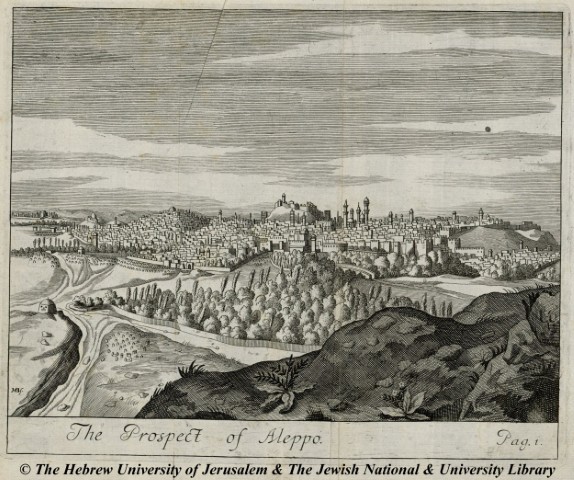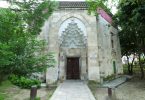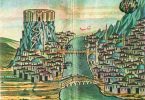One of the most beautiful cities on the Ottoman lands in the past, Aleppo today deeply wounds the hearts of those who know and have good memories of the city.
Contributor: CENGİZ AKGÜN
Aleppo was one of the most beautiful cities in Syria. Established at the point where roads stretching between Anatolia and Mesopotamia, and Mediterranean and Iran connected, Aleppo has an ancient history. Roads meant caravans, and caravans meant trade… Aleppo prospered with trade. As it became wealthier, the civilization level rose as well. But roads meant expedition. And expedition meant soldiers… Numerous armies passed through Aleppo and it has been attacked, destroyed and plundered many times.
A VAST HISTORY
Aleppo was declared as capital by Yamhad Kingdom in the 18th century B.C. Afterwards, it came under the rule of Hittite Kingdom established in Anatolia and became one of the most important provincial centres of the Hittites. In fact later, an independent Hittite state named the Kingdom of Halpa was born. The Hittites followed the Assyrians, Persians, Romans and Byzantines. Each civilization built the city pursuant to its own belief and architectural style. For example, during the Byzantine period, many churches were built in the city which made it a centre for Christianity. When the Islamic armies under the command of Syrian Governor and Commander Abu Ubaidah ibn al-Jarrah arrived in Aleppo, citizens of the city told they wanted to surrender with the condition that their lives, properties city walls and buildings were spared. Muslims accepted the conditions of Aleppo citizens and entered the city through the Iron Gate in Antioch. The city was ruled by Muslim governors in the following period. Aleppo never became an administrative centre during this period but it was still an important centre particularly in Abbasid and Umayyad periods. However, it was neglected after Umayyads dispersed. After the Umayyads, Aleppo was attacked by various governors, Bedouin, small states and Byzantines. The strong ones either besieged the city or captured it. Sometimes it was one of the most important cities in the region where people lived in abundance. Sometimes it was subjected to intense looting and destruction, and thousands of Aleppo locals were slaughtered.
ONCE AN OTTOMAN CITY
After the Muslims conquered the city, they built many architectural monuments. There were many monuments dating back to Seljuk, Ayyubid and Mameluke periods. Aleppo city lived a golden era during Zengid and Ayyubid periods. It was considered a centre particularly for science, culture and art. The Zengid who attached great importance to science and scholars, had madrasahs built in Syria, especially in Aleppo in care of Aleppo Atabeg Nureddin Mahmud. Again, the Mameluke built countless madrasah, mosque and libraries in Aleppo during their period. In fact, at that time, works on and poetry praising Aleppo were written. Culture level of Aleppo was considerably affected by the Crusades and devastation caused by outrageous and cruel Mongol invasions. Eminent scholars, intellectuals and artists of the period were forced to leave Aleppo and many went to Egypt. In the end, Aleppo was to live its golden age in the history with the Ottomans, and was to develop to an unprecedented extent.
The Ottoman soldiers under the command of Yavuz Sultan Selim swept Anatolia and defeated Mameluke Sultan Qansuh-al Ghawri in Marj Dabiq plain. After this victory, Aleppo became one of the many cities that entered Ottoman rule. During Yavuz Sultan Selim period, Aleppo regime in Mameluke period was preserved and remained under Damascus Governorship Administrative Zone along with other cities. However Aleppo became an independent governorship in the period of Suleiman the Magnificent who ascended the Ottoman throne after death of Yavuz. After this date, city and periphery’s landscape rapidly changed. Aleppo population was mainly composed of Arabs. Economically, Anatolia was the source of the raw material needs of city’s tradesmen and the required food for consumption. This helped Aleppo to get closer to the Turks. In addition, the city quickly adapted to the Ottoman organization. With these qualities, Aleppo is a typical Turkish-Islamic city inhabited by the Arabs. This influence can be observed in the architecture style, cuisine and life style of the period.
A DISFAVOURED JEWEL
In the 16th century, when Eastern Arabia entered Ottoman rule, Aleppo became an important trade centre. Especially European merchants steered for Aleppo instead of Damascus. From 1548 onwards, Venice, France and England opened consulates in Aleppo at intervals. Tradesmen who brought wool fabric and silver from Europe exchanged their goods with Indian spices here. However, towards the end of the century, the main product European traders sought was Persian silk. 17th century was when the population and wealth resulting from trade peaked in Aleppo. However, golden age only lasted for a century. Main source of wealth was Persian silk. Silk brought from Iran over Aleppo by caravans, was transported to Europe by ships through the Mediterranean. With the disintegration of Safavid State, the quality of Persian silk degraded. This prompted European silk customers to seek other sources and methods. The caravans would no longer pass through Aleppo. Unable to resist the rapid rise of two cities in Syrian region in the 19th century, Damascus and Beirut, Aleppo was shaken economically and politically. Shortly afterwards, the footsteps of the First World War were heard. In October 1918, British and rebel Arab forces forced the Ottoman troops to retreat and Aleppo joined the kingdom under Faisal al-Hashimy’s leadership on October 23rd. This was the end of 402 years of Ottoman rule. Before the First World War, Aleppo was the third largest city on Ottoman lands after Istanbul and Cairo. Despite all the destruction and looting, there were hundreds of traces of civilizations that inhabited these lands. The ruthless war in the last years has heavily wounded not only this ancient city but also a great human legacy. In fact, this is a sin of us, all of us, the humanity… Is not it?
IMPORTANT ARCHITECTURAL MONUMENTS
Aleppo Castle: Known as one of the oldest and largest buildings in the world, the castle was used by many civilizations. It is thought to attain its present state during the Ayyubid.
Great Mosque of Aleppo: The mosque was built in the early 8th century and its minaret built in 1090 was destroyed in 2013 in the war.
Al-Otrush Mosque: The inscriptions on the walls of the first mosque built in Aleppo are historical documents.
Al-Firdaws Madrasah: It was built in 1235 by Safiyye Hatun, the wife of the Ayyubid ruler al-Meliku’n-Nasır Yusuf.
Khusruwiyah Complex: Complex consisting of a mosque, madrasah and mausoleum was built by Mimar Sinan by command of Suleiman the Magnificent’s vizier Hüsrev Pasha. It was demolished in the last war city witnessed.









Leave a Comment